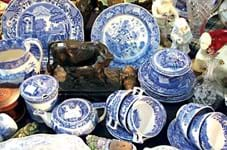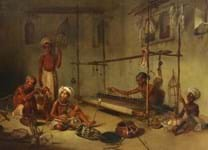Colnaghi are saddened by the recent death of Lord Rothschild, a man who has been described by Lord Vaizey as “one of Britain’s greatest cultural philanthropists who did so much to support the arts in this country”.
In addition to his multifarious philanthropic interests and public roles, as Chair of the Trustees of the National Gallery and later National Heritage Memorial Fund, Lord Rothschild was also the owner of the gallery between 1970 and 1981. There he presided over a period of extraordinary expansion in Colnaghi’s business, transforming the gallery from an old-fashioned family firm whose character was described by Sir Christopher White as “like a museum where things just happened to sell” to a dealership staffed by dynamic young directors, many of them in their twenties.
The old family firm was recapitalised and, under the ownership of Lord Rothschild, Colnaghi became a part of a larger group of companies, the Fourteen Old Bond Street group, a veritable empire which, alongside P&D Colnaghi and Co Ltd, had its own art trading company, Works of Art Ltd, managing the works of art department at the gallery; Burlington International Arts Fair Ltd, which looked after Colnaghi exhibitions at various arts fairs; Bond Editions Ltd, which traded in antique books and oleographs; and Arnold Wiggins and Sons Ltd, London’s most venerable picture framers, which managed the Colnaghi framing business.
Entrepreneurship and innovation were encouraged, and new management styles adopted.
Pioneering role
While the gallery continued to maintain its reputation for connoisseurship in the more traditional fields of Old Master paintings, drawings and prints, the Rothschild era was also a period of diversification into other fields and emerging markets in which Colnaghi played a pioneering role.
One notable example was Colnaghi’s move into photography, an area then attracting new interest among collectors in which Colnaghi had been pioneering dealers in the 1850s and 1860s. This was celebrated in Photography the First Fifty Years (1976), a very successful selling exhibition featuring many photographers such as Julia Margaret Cameron, who had been represented by Colnaghi in the 19th century.
Another innovation of the Rothschild era was the opening in 1975 of an oriental department, headed by Michael Goedhuis, a young director recruited by Rothschild from the world of banking.
A cousin of Lord Rothschild’s had inherited a great collection of Persian and Mogul manuscripts formed in the 19th century by Baron Edmond de Rothschild at the Chateau de Pregny near Geneva and this formed the basis of a spectacularly successful selling exhibition, with a catalogue by Basil Robinson, curator at the Victoria and Albert Museum, with many of the exhibits being bought by the Empress of Iran, and this was followed by another very successful exhibition of Indian art in 1978.
The Rothschild collection at Pregny also provided material for another innovatory foray, this time into the sculpture and decorative arts of the Renaissance, with Objects for a Wunderkammer (1981), an exhibition which anticipated the flowering of interest in this field that was to culminate in Prag Um 1600, the great Rudolf II exhibition held in Vienna in 1988.
But even in prints and Old Master paintings, Colnaghi’s traditional areas of pre-eminence, the Rothschild era was characterised by innovation. Frederick Mulder opened a gallery in the basement specialising in 20th-century prints and soon the walls were hung with prints by the German Expressionists, Munch and Russian Constructivists which proved very popular with collectors.
Meanwhile in Old Master paintings, Colnaghi caught the wave of revived interest in Italian baroque and mannerist pictures and, in the late 1970s, under the directorship of Richard Herner, gave some notable exhibitions, such as Painting in Florence 1600-1700, staged at the Royal Academy and Fitzwilliam Museum in 1979, which shed new light on relatively neglected fields.
In 1981 Lord Rothschild relinquished his interest in Colnaghi which became part of the Oetker Group, enabling him to concentrate more on his many philanthropic activities.
National Gallery role
In 1985 he became chair of trustees of the National Gallery and during a period of only six years, played an enormously important role in reshaping the gallery and influencing its future direction.
Adroitly weathering the storm of controversy over the proposed extension to the west of the old building, which had been dismissed as a “monstrous carbuncle” by the Prince of Wales, Rothschild oversaw the building of the new wing to a more restrained design by Robert Venturi, which provided a very sympathetic environment for the late medieval and early Renaissance paintings, and he also persuaded the Sainsbury Family to finance it.
He also encouraged Sir Paul Getty to give the gallery a munificent endowment which transformed its abilities to acquire paintings for the collection including works of art of great importance to the national heritage threatened with export.
On standing down as chairman of the National Gallery trustees, Lord Rothschild took on an even more important and influential role as chairman of the National Heritage Memorial Fund, which, thanks to the establishment of the National Lottery in 1995, had greatly increased powers and among Lord Rothschild’s achievements were the securing for the nation of Lord Nelson’s letters and Sir Winston Churchill’s papers.
He was also instrumental in the transformation of Somerset House from a municipal centre for branches of the Civil Service, to one of London’s most vibrant arts venues, housing the Courtauld Institute and, for a time, the Gilbert Collection. Another notable triumph was the restoration of Spencer House, whose lease was acquired by RIT Capital Partners, one of Lord Rothschild’s companies, in 1985, and the refurbishment and refurnishing of London’s most splendid surviving Georgian townhouse.
Waddesdon Manor revival
But in many ways the most significant of Lord Rothschild’s acts of private philanthropy was at Waddesdon Manor, whose former chatelaine, his cousin Dorothy de Rothschild, had left the house to the National Trust in 1957.
Although in the stewardship of the National Trust, the house had a special place in the affections of Lord Rothschild who lived on the neighbouring Eythrope estate, and did a huge amount to restore, maintain, but also transform the house and its collections.
Some of the areas of the house, such as the Bachelor’s Wing, were lovingly restored to their late 19th-century appearance, and Lord Rothschild played an important role in augmenting the house’s great collections of 18th-century French art with important acquisitions of Sèvres and a beautiful painting by Chardin as well as the famous Hanover silver service created for George III.
But Lord Rothschild was also a notable patron of contemporary art, not afraid to juxtapose 18th-century panelling with an exploding chandelier by Ingo Maurer, or to introduce into the Victorian gardens he had so lovingly restored, quirky contemporary installations such as a giant wedding cake garden folly (nicknamed ‘the gâteau in the chateau’) by Portuguese artist Joana Vasconcelo or the ‘Lafitte candlesticks’ composed of giant magnums referencing the great collections of wine formed by Lord Rothschild’s ancestor and the builder of the house, Baron Ferdinand de Rothschild.
Colnaghi connection remained
Although 1981 had marked the end Lord Rothschild’s ownership of Colnaghi, his relationship with the gallery remained important and, in 2010, shortly after the firm celebrated its 250th anniversary, he was persuaded by Katrin Bellinger, then co-owner of the gallery, to provide space at Windmill Hill, Waddesdon, for the Colnaghi archive.
In 2011 the archive, which had been divided between an office at 14 Old Bond Street and an unprepossessing warehouse in east London, moved into a new, state-of-the art building at Windmill Hill, Waddesdon, erected by Lord Rothschild on the site of an old dairy farm. Here it has been conserved, catalogued and partly digitised and is expertly looked after by a small team of archivists, providing far greater accessibility than before to scholars working on the history of collecting and the art market for which it is a key resource.
This has opened up one of the most important dealer archives in the world, particularly rich in its holdings relating to American collecting in the early 20th century, and, in the last 15 years a string of publications has revealed some of the untold stories of masterpieces sold by Colnaghi to museums, notably the Gardner Museum, Boston and the Frick Collection in New York.
The archive also provides a vital resource for provenance research which has become a key element in today’s art market.
Jeremy Howard
Colnaghi














